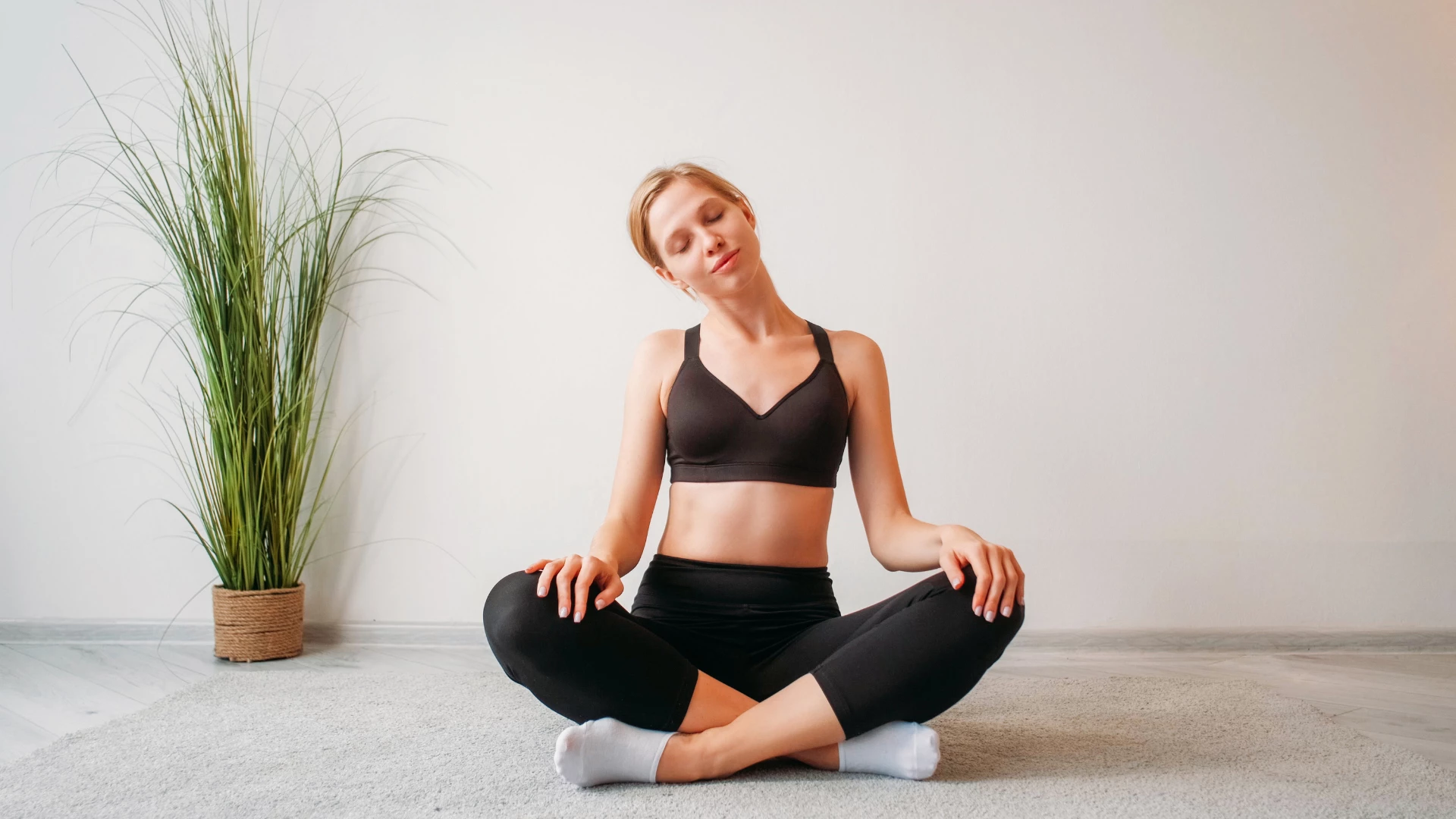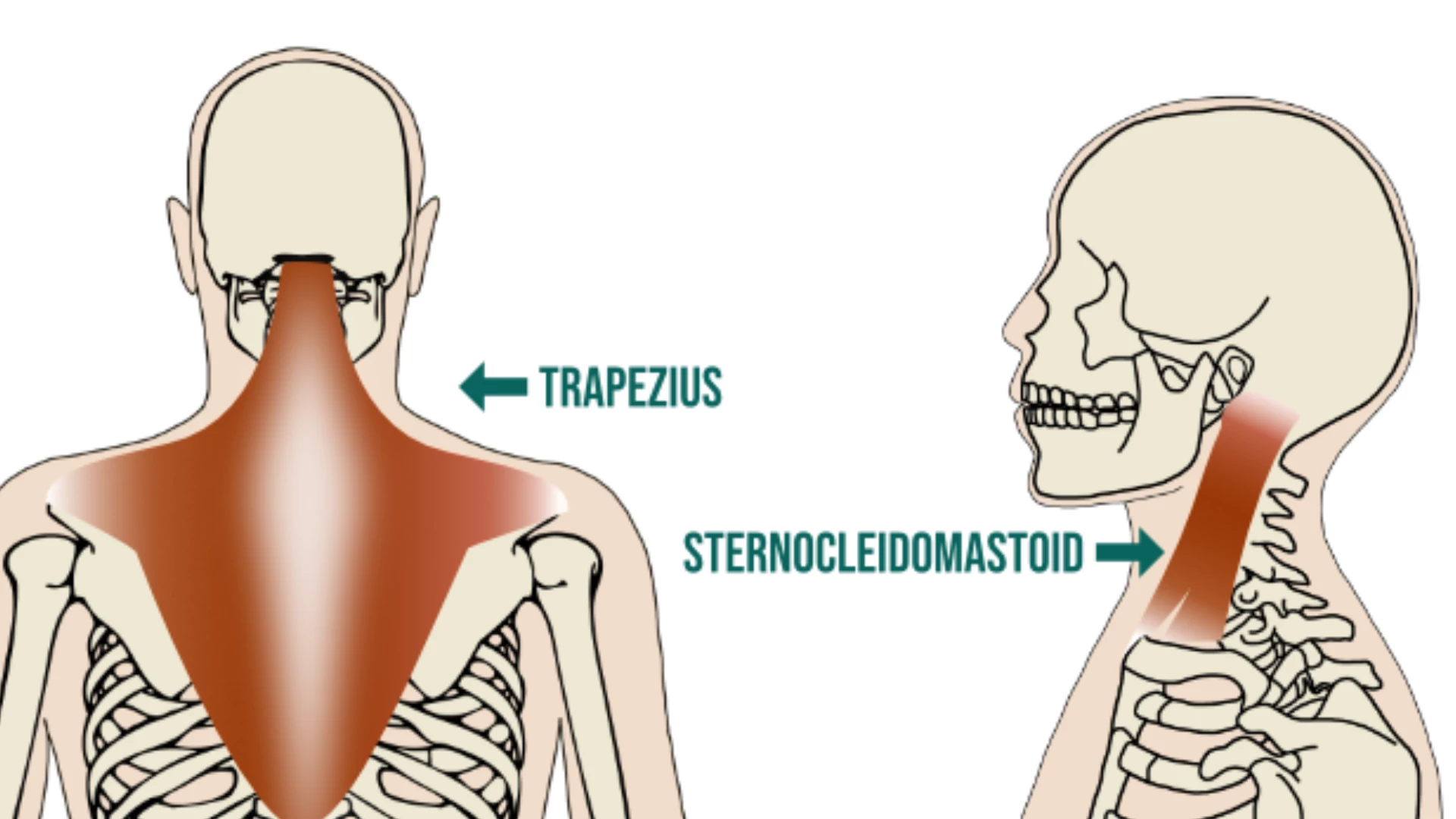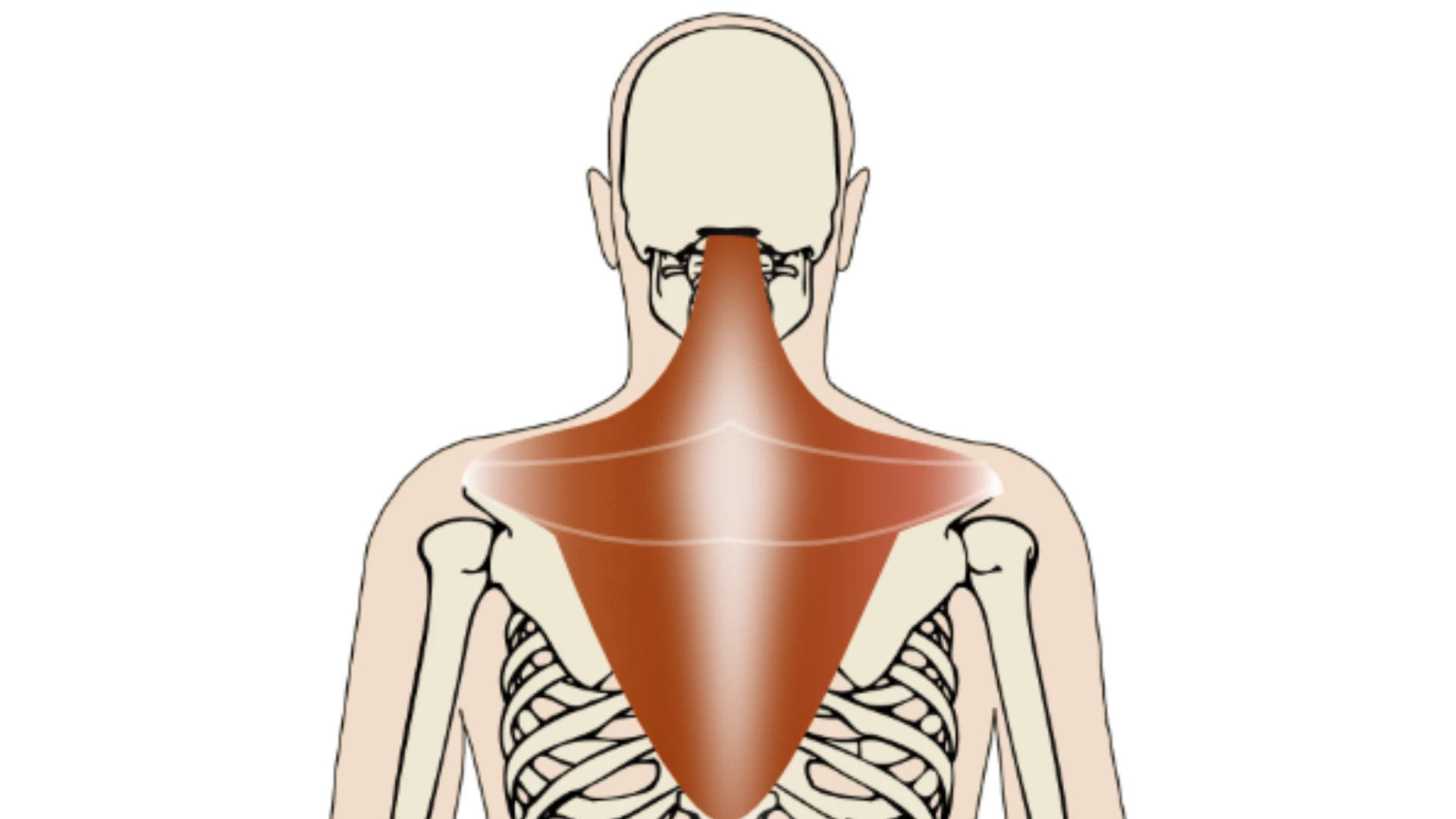Do You Have Neck Tension? Here Are 3 Patterns that Can Cause Pain

Article At A Glance
Do you experience neck tension or pain? If so, you may practice one or more of these three movement patterns that can cause neck pain. Read about the primary muscles involved in neck movement and how to determine whether you are practicing one or more of these three patterns that contribute to neck tension.
What do you do when you are startled, or if you hear, see, smell or sense something unusual? You immediately turn your head toward it to see what’s going on. This is a natural survival instinct that is essential in the animal world for both the predator (to follow the prey) and the prey (to keep track of the predator). Quick and precise movements of the head were always essential to our survival as species.
Maybe that’s why the two major muscles of the neck and upper back (trapezius and sternocleidomastoid) are innervated by the cranial nerve XI (also called “spinal accessory nerve”), unlike all other muscles of the body, which are innervated by the spinal nerves. If you experience neck tension, read on to learn more about these muscles and why they might contribute to your discomfort.

Why does it matter? It matters because cranial nerve XI is intertwined with the famous vagus nerve that regulates the state of our autonomic nervous system. This tells us that the tone and activity of the trapezius and sternocleidomastoid (SCM) muscles are closely tied to the state of our autonomic nervous system.
Both of those muscles have an interesting story in human development.
4 Stages of Muscular Development of the Neck and Upper Back
Stage 1: Lifting the Head up
The first major muscular movement that a new human masters is being able to lift the head up (by using her upper trapezius muscles) and then turn her head to look around (by using her sternocleidomastoid muscles) and take in the world through her senses.
Stage 2: Lifting head and Upper Body
The baby learns to prop herself up with her arms and lift her upper body up slightly. The baby arches her lower back (action of the lower trapezius), pulls the shoulders together (action of the middle trapezius), and tips the head back (action of the upper trapezius). She turns her head from this position by engaging her sternocleidomastoid.
Stage 3: Holding Head Up and supporting weight on the Arms
The baby transitions up to all fours and begins to crawl, which requires her to use her trapezius muscles asymmetrically to move her arms while supporting the weight of the upper body on her hands. “When we first came up to crawl on all fours, the trapezius muscle held our head up high. The three parts of the trapezius functioned like a single muscle in which all of the fibers had roughly the same tension. Some of the muscle fibers worked to pull the shoulders back and together to support our upper spine, and other fibers pulling in other directions worked to lift the head back and up.” (1)

Stage 4: Balancing the Head over the upper body
Once the baby transitions up to standing, the whole structural arrangement is completely changed. Now those same muscles are responsible for holding the head upright and turning it in various directions from that new position. Since it is no longer required to support the weight of the upper body on her hands, the function of the trapezius muscles is modified. “Rather than acting as a single muscle, these muscle fibers organized themselves into three functional units—now seen as the upper, middle, and lower trapezius—and these three groups of fibers began to work as separate entities. One part, therefore, might be overly tense while another part is under-tensed.” (1)
As the kid gets older, she continues to occasionally crawl on all fours, climb trees, throw a ball, wrestle with friends, or do monkey bars. All those activities maintain a good tone in her neck and upper back muscles. But as we get older and choose different occupations and lifestyles, we begin to develop other kinds of movement patterns that can make our neck and upper back muscles tense, flaccid, or imbalanced, which causes neck tension, upper back stiffness, poor posture, headaches, and all sorts of other problems.
3 Main Reasons for Neck Tension
There are three main reasons why we get neck tension: overuse, underuse and abuse.
Neck Tension Pattern 1: Overuse
A friend of mine is a violinist for the Detroit Symphony Orchestra, which means that she spends many hours every day leaning and turning her head to one side, while holding her arms up, to play her violin. Eventually, she developed severe pain in her neck and upper back and couldn’t work. Since her livelihood depends on her ability to play her instrument, she was extremely stressed out when it happened, which probably didn’t help with her neck tension, since our neck muscles respond quickly to the state of our autonomic nervous system.
There are many other occupations that are at risk of developing serious problems from overusing the muscles of neck and upper back, including construction workers and electricians who have to look up, hairstylists who have to hold their arms raised, airport workers who move heavy luggage, teachers who frequently turn their heads, and many others. If you have an occupation that requires repetitive motion of your neck and upper back, it is essential to have a regular movement routine that helps release tension in the muscles that are most affected and to calm your nervous system down. It is also very important to analyze your habitual movement patterns and get a very clear idea of which part of the neck is tense (see practice below).
Neck Tension Pattern 2: Underuse
If you don’t use your neck and upper back much during the day, your muscles will lose their tone. If you rarely look up or to the side (turning your whole body instead), if you don’t raise your arms much, if you never support your weight on your hands if you never bend back. In short, if you keep the movement of your upper body and head very limited, your muscles will become flaccid and weak.
Neck Tension Pattern 3: Abuse
If you spend long stretches of time in front of the computer or electronic devices, your head is likely to move forward in relation to your upper body, which pulls strongly on the muscles of the neck and upper back and causes tension there.
The state of your autonomic nervous system might also show up in your posture and your muscle tone. If you are feeling agitated during your work day, you might assume a defensive posture that protects your heart. But at the same time, you may stay alert and hyper-vigilant by holding your head forward and up, expecting danger to come from any direction. If you are feeling withdrawn and resigned, like you cannot fight any longer, you might draw your head into your shoulders, assume a collapsed posture, and experience a general sense of weakness.
Here’s the assessment sheet Olga mentions in the video.
Also, read...
Wrist Pain During Yoga? 4 Tricks to Eliminate Discomfort
Yoga for Neck Health: Exploring Brahma Mudra
Carpal Tunnel Syndrome: A Yoga Sequence to Soothe Sore Wrists
Related courses
Breath as Medicine: Yogic Breathing for Vital Aging
Yoga and Myofascial Release: Releasing Chronic Tension with the Bodymind Ballwork Method
Yoga and Detoxification: Tips for Stimulating Lymphatic Health

Educated as a school teacher, Olga Kabel has been teaching yoga for over 14 years. She completed multiple Yoga Teacher Training Programs but discovered the strongest connection to the Krishnamacharya/ T.K.V. Desikachar lineage. She had studied with Gary Kraftsow and American Viniyoga Institute (2004-2006) and received her Viniyoga Teacher diploma in July 2006, becoming an AVI-certified Yoga Therapist in April 2011. Olga is a founder and managing director of Sequence Wiz— a web-based yoga sequence builder that assists yoga teachers and yoga therapists in creating and organizing yoga practices. It also features simple, informational articles on how to sequence yoga practices for maximum effectiveness. Olga strongly believes in the healing power of this ancient discipline on every level: physical, psychological, and spiritual. She strives to make yoga practices accessible to students of any age, physical ability, and medical history, specializing in helping her students relieve muscle aches and pains, manage stress and anxiety, and develop mental focus.






